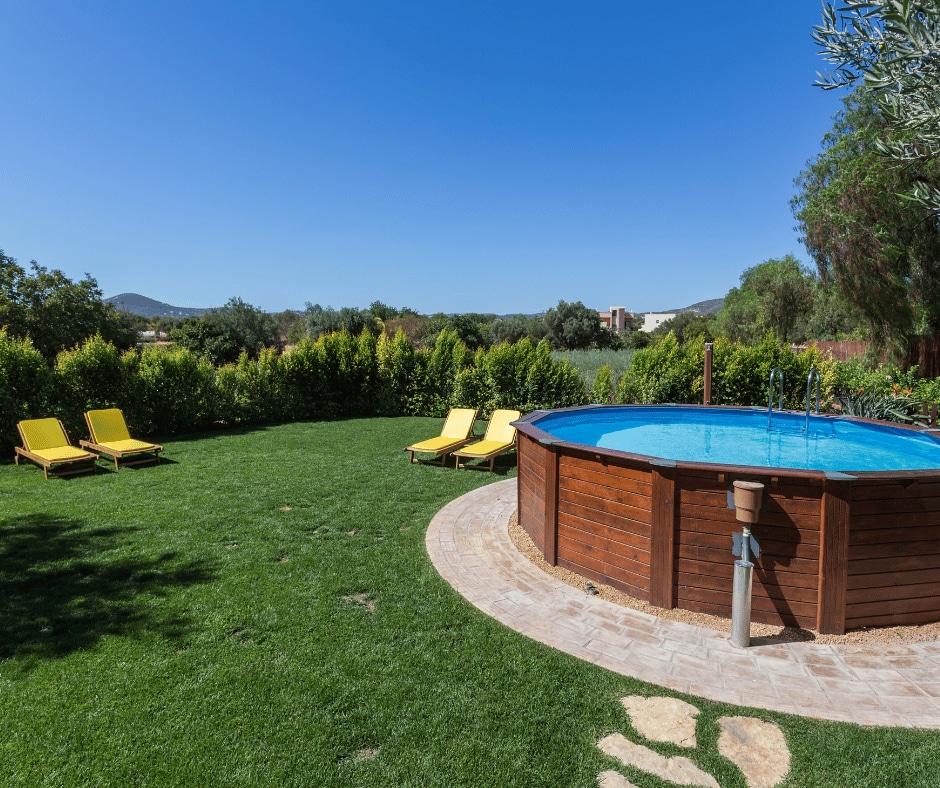Services
What to Put Under An Above-Ground Pool?
Above-ground pools have become an increasingly popular way to enjoy the summer sun without breaking the bank. However, in order to keep your pool safe and structurally sound, there are a few things that should go underneath it. The first item to consider is adding – a thick foam pad between the pool and its base will reduce friction and help prevent damage from shifting soil. A protective tarp or liner placed beneath the pool can also help protect against corrosion or leaks while making it easier to clean up if a spill occurs. Additionally, gravel or sand can be used to provide extra stability around the edges of the pool. With these simple additions, you’re sure to get many years of enjoyment out of your above-ground pool!
Concrete Pads
Installing a concrete pad underneath an above-ground pool can provide extra long-term support and protection for your pool. It can help protect your pool from pests and weeds, and it can also raise the level of the pool slightly, which increases water security from potential floods or rainwater. Installing a concrete pad will require some prior excavating to level off the area in preparation for laying the concrete. Once that is complete, you can mix and apply the concrete in order to create a strong foundation for your swimming pool. By installing a pad beneath your above-ground pool, you are guaranteed additional stability and durability now and into the future.
Commercial Pads
Installing pads underneath an above-ground pool can be a great way to protect your investment. Not only do they shield the pool from weather, but they also provide cushioning and stability over any occasionally uneven terrain. When selecting a pad, it is important to look for quality materials that will not break down due to sun exposure or moisture. Commercial pads are often specifically designed with this in mind and can be the most effective way to ensure your pool lasts for years to come.
Sand
The prospect of owning an above-ground pool is very exciting, but it’s important to take the necessary steps to make sure your pool is properly installed. Filling the perimeter with sand can provide stability and reduce pressure on the walls, ensuring that your above-ground pool will stay in place and stand the test of time. Using quality coarse-grained playground sand also known as frac sand is critical for providing this extra support – never use silica, masonry, or beach sand because they can lead to leaks and other unwanted consequences. Before deciding on the amount of sand that’s needed for installation, consulting with a pool expert ensures that your above-ground swimming experience is safe and enjoyable for years to come.
Solid Foam
Installing solid foam under an above-ground pool can offer numerous advantages for safety and convenience. It helps protect against the risk of the pool shifting, reducing the chances of damage to the ground beneath it. Additionally, insulation from solid foam helps retain heat within the pool, allowing for a longer swimming season. The installation process is relatively straightforward and requires few tools or specialized skills to complete; simply measure, cut, and secure out your foams up pads around your pool’s walls. Professionally installed solid foam pads beneath your pool provide a smart investment that you can enjoy for years to come!
Carpet Padding
Carpet padding underneath an above-ground pool can significantly reduce noise and vibration when using your pool, thus ultimately increasing the overall enjoyment of outdoor swimming and lounging. Not only can it improve general comfort and relaxation, but carpet padding can also provide additional protection against any possible shifting or misalignment of the pool with its foundation due to adverse weather or other external forces. Installing protective padding beneath the base of an above-ground pool is a cost-effective solution that will ensure your pool continues to bring you maximum pleasure for many years to come.
Flooring Underlayment
Above-ground pools are often an ideal choice for homeowners who don’t have the space or budget for an in-ground pool. To make sure your pool remains safe, durable, and long-lasting, however, it’s important to install the right type of underlayment beneath it. Flooring underlayment should be used as a strong foundation that helps prevent punctures from sharp objects like rocks, roots, and twigs which can cause damage over time. This tactful approach also adds cushioning for swimmers. For best performance and increased longevity, selecting quality flooring material should be a priority when considering above-ground pool installation.
